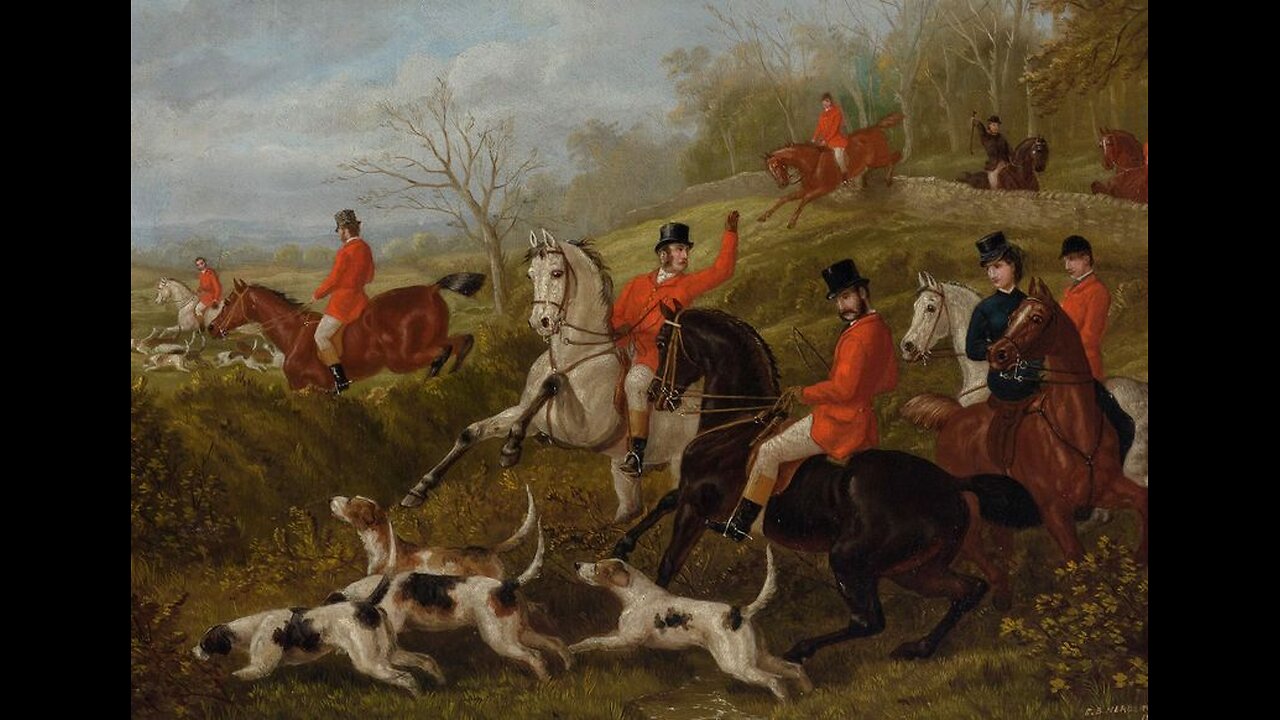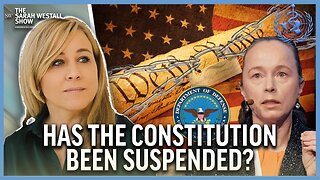Premium Only Content

"Thirteen at Table" by Lord Dunsany
Bromley: in this case, the town, not the borough of London, which is 9.5 miles (15 km) southeast of Charing Cross.
Sydenham is a district of south-east London, and home to the Crystal Palace (destroyed in a fire in 1936).
"China fought Japan" - Given this book was published in 1916, it must be referencing the war of 1894-1895, fought primarily for hegemony over the Korean peninsula.
Aubusson carpet: Aubusson is a commune in central France, and it famous for its tapestries and carpets since at least the 16th century.
A lot of terms in here specific to fox hunting, which I imagine not many people today would be much familiar with:
- Field: The field can be any number of riders, but on rare occasions, fields of more than 100 can show up on weekends or special meets, such as Opening Day, the day after our Hunter Trials, New Year's and the Blessing of the Hounds. Many hunts have a first, second or even a third field, each of which has a Field Master.
First Flight: The first field consists of the riders who stay closest to the huntsman and hounds. They stay with hounds as they gallop over all obstacles, through water and all types of terrain. The first field should always consist of experienced riders with safe horses accustomed to hunting.
Second Flight: The second field is usually mounted foxhunters who prefer a slower pace, or have green horses that need to be trained to foxhunt. The second field can go around obstacles but tries to stay up with hounds whenever possible. The primary goal of second-flight riding is viewing the sport.
Third Flight (Hilltoppers): The third field is often called “hilltoppers” because they’re usually positioned on hills or places that give them maximum viewing opportunities. This group of mounted followers doesn’t jump or gallop. They mostly walk or trot from one location to another and, unlike the second field, they’re in no hurry to stay with hounds. Often the group consists of older members, very young children on lead-line ponies, inexperienced riders, or riders on green horses.
- Whip: assistant to the huntsman. Their main job is to keep the pack all together, especially to prevent the hounds from straying or 'riotting', which term refers to the hunting of animals other than the hunted fox or trail line.
So it appears the speed of a fox is nearly as fast as the speed of a horse. At maximum speeds a well trained horse can be a little bit faster, but over long distances they are both probably going to trot in the range of 8 to 10 miles per hour. As this is a 20 mile chase, that's 2 to 2.5 hours of chase. They make it sound like it took the entire day long. Even at a slower walking pace for a horse of 4 or 5 miles per hour, that's still not going to be the whole day long. Something's off here...
(For the metric folks, 20 miles = 32 km, so 10 miles = 16 km, 5 miles = 8 km)
I mean, it does sound like they were, at least at first, taking time to investigate various nooks and crannies here and there which would have slowed them down considerably, but still, it sounds like it was a 10 to 12 hour chase!?! But then I've never been fox hunting, so I have no idea how it goes.
The picture used is "The Fox Hunt" (1875) by Edward Benjamin Herberte. I believe his fox hunt scenes are from various hunts in North Warwickshire, so not exactly Kent, but it will just have to do. At least the time of the painting is very close to what we want, so there's that.
To follow along: https://www.gutenberg.org/files/13821/13821-h/13821-h.htm#thirteen
I don't really know the geography of the British isles at all, but talking about chalk cliffs of Kent made me wonder if perhaps the White Cliffs of Dover are also in Kent? And lo, they are! So now that's my visual for this fox hunt...
-
 1:46:16
1:46:16
Redacted News
14 hours agoRFK CONFIRMATION: Kennedy goes to WAR with Big Pharma Democrats in Fiery Hearing | Redacted Live
264K431 -
 57:31
57:31
Candace Show Podcast
14 hours agoBREAKING! Taylor Swift Turns Against Blake Lively & Ryan Reynolds | Candace Ep 141
241K177 -
 1:04:59
1:04:59
Sarah Westall
11 hours agoRFK Jr Report, Constitution Suspended, War Time Procedures in Place, WHO Exit, DOD w/ Sasha Latypova
81K34 -
 1:56:37
1:56:37
Melonie Mac
15 hours agoGo Boom Live Ep 35!
69.6K15 -
 1:01:13
1:01:13
LFA TV
18 hours agoPRESIDENT TRUMP SIGNS LAKEN RILEY ACT | BASED AMERICA 1.29.25 6pm
74.5K8 -
 1:43:07
1:43:07
2 MIKES LIVE
12 hours ago2 MIKES LIVE #172 News Breakdown Wednesday!
40.4K2 -
 1:26:16
1:26:16
The Big Mig™
13 hours agoJ6’r Ryan Samsel Free At Last The BOP & DOJ Exposed
39K4 -
 31:34
31:34
The Based Mother
13 hours ago $2.41 earnedEXECUTIVE ORDER MUTILATES GENDER IDEOLOGY! Trump’s pulling out all the stops.
26.8K10 -
 1:05:44
1:05:44
The Amber May Show
1 day ago $1.84 earnedSaving The Innocence | Rescuing Children From Rape Trafficking | Alan Smyth
26.7K4 -
 1:40:46
1:40:46
In The Litter Box w/ Jewels & Catturd
1 day agoIs the Jab Poisonous? | In the Litter Box w/ Jewels & Catturd – Ep. 730 – 1/29/2025
92.7K46